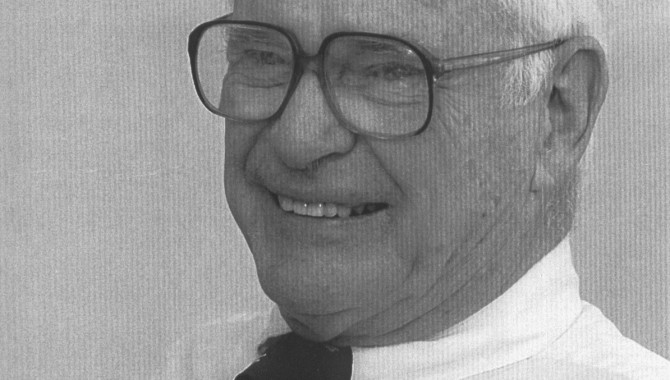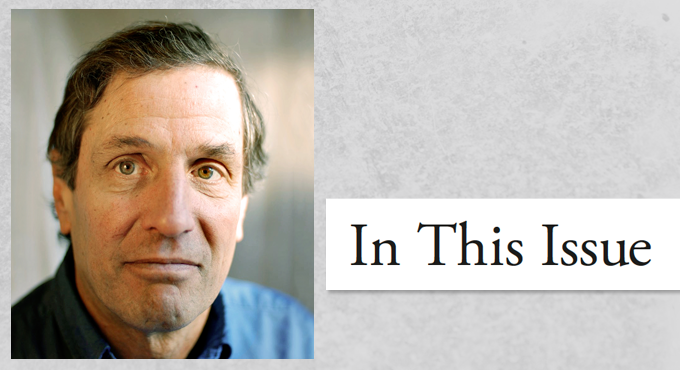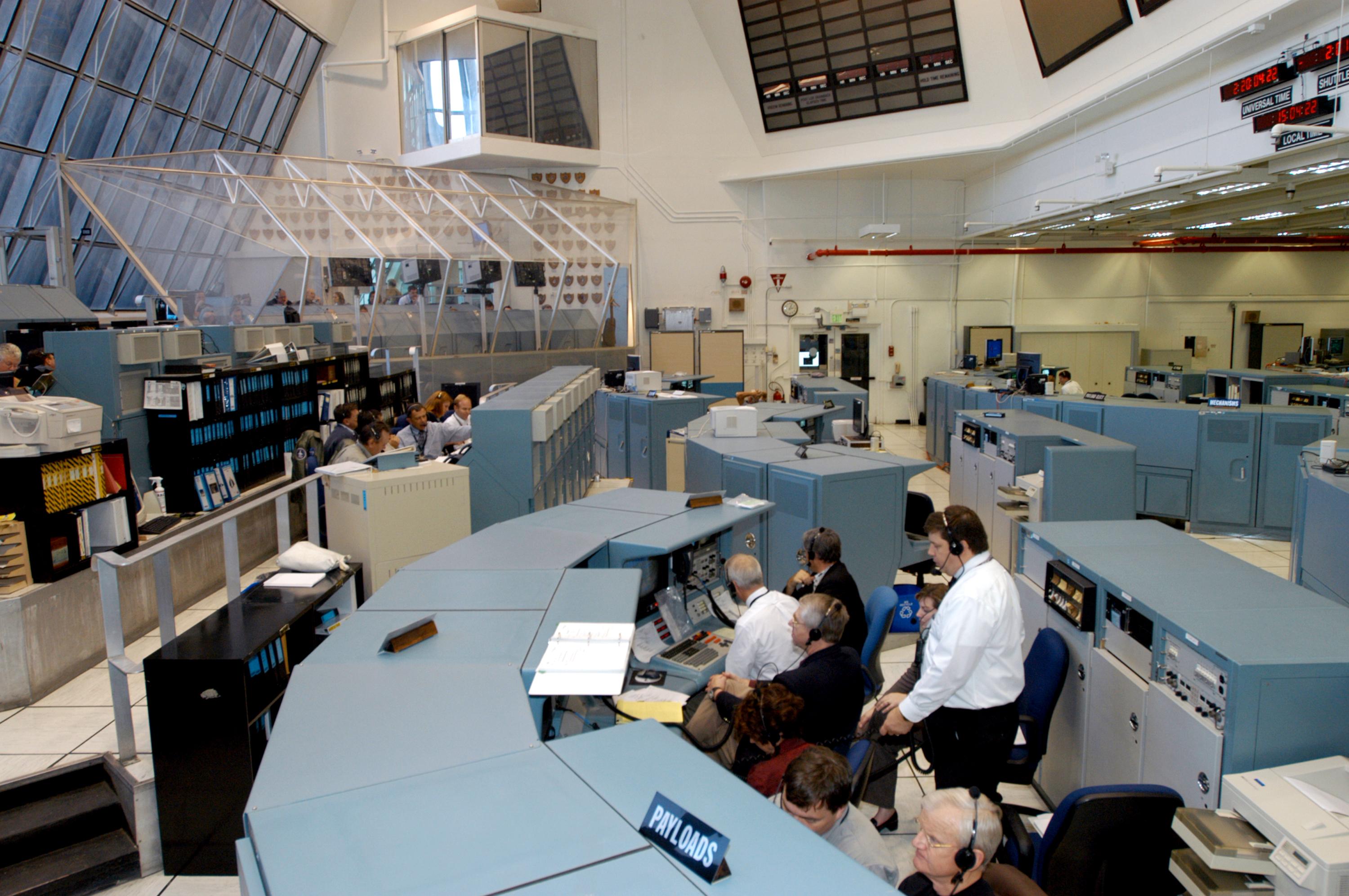
By Don Cohen
Robert C. Seamans was appointed associate administrator of NASA in 1960 and became deputy administrator in 1965. He later became secretary of the U.S. Air Force and then dean of the School of Engineering at MIT. Don Cohen spoke with him at the Robert C. Seamans Learning Laboratory on the MIT campus in Cambridge, Mass.
COHEN: What was NASA like when you became associate administrator in 1960?
SEAMANS: A lot of people thought I was nuts to take the job because Eisenhower’s term was about over, and there was a real question as to what might happen next. Was Nixon or Kennedy going to be elected? That was still in the lap of the gods on September first, when I was sworn in. My first job was to try to see what was already going on. I’d served on NACA [National Advisory Committee for Aeronautics] committees, and I’d even been on an interim committee to see what NASA might do in certain areas, but it’s one thing to have a general idea and another to know what each of the centers is doing. Keith Glennan, who was the administrator, was very thoughtful and said, “Why don’t you take the first month and get around to every one of the centers?” I started off at Langley. The first thing that Tommy Thompson, the director, had set up was for me to get to know something about Mercury. I climbed into the simulator; John Glenn put the hatch down and went through a very modest simulation. Next I met with John Houbolt and one or two others. Oftentimes when you go for briefings you have a lot of people in the room and slides like you wouldn’t believe. All John had was three or four sheets pinned up to the blackboard explaining what’s involved if you go direct ascent to the moon, and what you might gain if you rendezvous in Earth orbit—basically you don’t have to build such a big launch vehicle. But if you go lunar orbit rendezvous, you don’t have to decelerate 4,000 feet to land on the moon and then accelerate to get back home. It’s a hell of a savings of energy.
COHEN: So you were presented with the lunar rendezvous idea as soon as you joined NASA.
SEAMANS: It was either my second or my third day.
COHEN: That’s a powerful argument for being on the spot and meeting people.
SEAMANS: I’m a great believer in not sitting at your desk all day long. You have to do your homework at some point. My wife will attest to the fact that I usually brought home one briefcase and sometimes two on weekends.
COHEN: At that point there was no government commitment to go to the moon.
SEAMANS: I was in one of Eisenhower’s final cabinet meetings with Keith Glennan to discuss the budget for NASA for the following year, which was something like $1.029 billion. I’d been with Keith to Morey Stans to see if we could extract more funds. Morey said, “You’ve got to be kidding, Keith.” Keith asked, “What do you want, Morey?” He said, “I want a bargain basement figure.” At the cabinet meeting, Kistiakowsky, Eisenhower’s chief scientist, gave a short presentation on what it would take to go to the moon: something like $20 to $35 billion. Somebody said, “If we let those scientists go to the moon, the next thing you know they’re going to want to go to Mars.” Eisenhower said, “I wish someone would tell me what is the best possible program in space that costs no more than a billion dollars.”
COHEN: Did that attitude change as soon as Kennedy came in?
SEAMANS: When Jim Webb and I went to Dave Bell, who became director of budget, we started discussing some of the things we thought should be added, or at least discussed. Bell said, “The president is very busy. He knows space is important, but he doesn’t feel any great rush about it. He wants to get his mind around it next year for the following year’s budget.” It’s one’s prerogative at that point to say, “That’s unacceptable,” so we had a meeting with President Kennedy. The president said, “OK, Jim, what are we here for?” I was amazed when Jim said, “We’re here to hear Bob Seamans tell us what more we ought to be doing.”
COHEN: You weren’t prepared for that?
SEAMANS: He hadn’t told me, but I knew how much we’d put in to the Eisenhower people for the second stage of the Saturn 1, for a larger rocket, for studying possibilities beyond the Mercury project. I was able to run through the figures: for instance, if we get $45 million more, we can have the Saturn 1 ready for a manned flight in ’65 rather than ’67, and so on. Kennedy immediately said, “I want that in writing tomorrow morning.” George Low had already run one study on what it would take to go to the moon—a short, general study, nothing very quantitative. The idea was that it seemed technically feasible; there didn’t seem to be anything major that couldn’t be handled. I also knew from that study the time that could be saved with additional money. We had Bill Fleming pull together a group to really think through all the different things that would have to be done and in effect make a gigantic PERT [Program Evaluation and Review Technique] chart of what it would take to go to the moon. We did it on the basis of direct descent. I wanted to base it on lunar orbit rendezvous but there was great hesitation on everybody’s part to do that. They said, “We don’t know enough about it.” We came up with an estimate of $12 billion and presented it to Hugh Dryden and Jim. Jim said, “I think we ought to put an administrative discount on it.”
COHEN: He didn’t think you could get that much?
SEAMANS: Not a discount of money. He meant discounting our ability to think of all the things that needed to be done.
COHEN: A discount in reverse.
SEAMANS: He said, “Let’s make it twenty.” That’s the number we used forever after.
COHEN: Presumably Cold War competition created support for that kind of investment.
SEAMANS: Hugh Dryden used to work with his counterpart from the Academy of Science in the Soviet Union. At one time Hugh said, “Couldn’t we accomplish more if we worked together on some of these things?” The Russians said, “Good God, don’t do that. Then we won’t be able to get money for anything.” We didn’t even know who we were dealing with in those days. It turned out to be Korolev, a very imaginative guy. He got Khrushchev to go along with a few shots against the wishes of the army of the Soviet Union, which didn’t want to see anybody else get funds for rocketry. Korolev did amazingly well with first the Sputnik, then a dog, then a flight around the moon that took pictures. Then Gagarin went up. Khrushchev could see the benefit of this effort on a worldwide basis. We here, including Kennedy, could see how we were losing on a worldwide basis. After Gagarin flew, Congress was mad as hell that the Russians had done something else ahead of us.
COHEN: Which led them to fund Apollo. Do you see any equivalent pressure now?
SEAMANS: The Japanese have geared up to do some things and the Chinese have, but there’s no real driver in the country today. I happened to be at NASA a couple of days before President Bush spoke and recommended that we have a program to go first to the moon and then to Mars. In all honesty, I was surprised. I don’t know whether he could see the glory in it or felt that would be a way to inspire the younger generation to go into science.
COHEN: Has NASA drawn on your experience of the earlier moon flights in planning the return?
SEAMANS: I was asked by Mike [Griffin] to sit in on a multiday review of the internal planning at NASA. I was impressed with the fact that an awful lot of thought and detail work had taken place. I was concerned that the cost estimates, which were questionable, were done by comparison with Apollo. The idea was that we were smarter now than we were then, so we ought to be able to build a capsule and launch vehicles for 25 percent less. I felt that the dollars were low and at some point there wouldn’t be enough money available, and Congress would be yelling about overruns. We were very fortunate on Apollo that we had about the right number to work with.
COHEN: Do you think the past experience on Apollo won’t save money?
SEAMANS: NASA not only has to go off into the future, they’ve still got a major program, namely the space station, and Mike has reintroduced going back to the Hubble. There’s a tremendous amount invested in the station-by ourselves, the Japanese, the Europeans, and the Canadians. We have a responsibility to finish it off in reasonable style. Once we get the launch vehicles for the lunar work, we will presumably also have vehicles that can sustain and operate the space station. In the near term, the four years before the shuttle fleet is supposed to be retired, you’ve got a heck of a lot you have to do to come close to completing the space station while at the same time going into the most expensive part of the lunar program and maybe the Mars program. It’s in those initial development years that you really have to spend a lot of money. To have one program phase out and mesh with the new program building up is really a difficult problem.
COHEN: Aside from the financial concerns, what lessons does Apollo offer for the new mission?
SEAMANS: There wasn’t any question that most of the Apollo work had to be done on contract: it ended up being 90 or 95 percent. We felt very strongly that we could not manage Apollo unless we had technical competence within NASA to cover any aspect of any problem that might arise. Again and again, that proved critical. We had a lot of trouble with the second stage of the Saturn 2. One day when we were doing static testing at a cryogenic temperature, it just unzipped all the way down because there had been one small crack. Between Langley and Huntsville, we had as many competent people in fracture mechanics as there were in the country. I worry that we don’t have as much competence within NASA today as we did then.
COHEN: How can NASA develop and maintain that level of technical competence?
SEAMANS: You cannot have good technical people on standby doing nothing and suddenly put them on the job when you have a problem. You have to have competent people doing exciting work that is not central to the program so they can be thrown in to fix the problem even if it takes six months. We had a line item that was called SRT, Supporting Research and Technology, which meant funds in every one of our major projects for scientific and technical people to look at alternatives—a different material, a different gyroscope, or whatever. We had to keep fighting for that capability with the budget people.
COHEN: Coordinating all the Apollo work must have been a tremendous challenge.
SEAMANS: You needed to have not only the competence throughout NASA, you also needed to pull it all together. Somebody had to take a look at the totality of what was going on at NASA. As general manager, I was responsible not just for Apollo but for all the other projects we had. I had to balance the funding and the disposition of manpower. I also had to decide whether we were going to need new facilities. There was a problem down at the Cape because every single NASA center had its own senior person managing his or her project with no single person to bring it all together.
COHEN: It must have been a challenge even to know what was going on.
SEAMANS: I myself am a great believer in monthly project assessments. My view was the minority view. Most people felt they were a waste of time. It’s the way I worked when I was at RCA. From the time I got there, we had reviews of all major projects on a monthly basis. When I got to the air force, I said that was what I planned to do. They said, “Let us show you how we’ve been doing it.” I went into a room, a colonel clicked his heels, and some guy stood up and started running through a lot of slides. I asked how many levels in the air force had reviewed them. “Fifteen,” they told me. I said, “There’s no point in my being in the room,” and I got up and left.
COHEN: Did you think it wasn’t worthwhile to hear something that had gone through fifteen levels of review because it was removed from the people who had done the hands-on work?
SEAMANS: If it goes through fifteen levels, God knows what you get out at the other end.
COHEN: Were your monthly reviews a way of uncovering problems, or opportunities to share expertise?
SEAMANS: More the second than the first, but you’ve got to have people who understand that they can’t hold back information. Sometimes there’s something you don’t want to tell anybody because you’re not doing well on some part of the project. You figure you can get it resolved in another month.
COHEN: Engineers want to solve their own problems. Were there major surprises during the Apollo program?
SEAMANS: Of course the major event that had not been anticipated was the Apollo 1 fire. Just as I arrived home that day, my wife said George Low was on the phone. I picked up the phone and George said, “They’re dead.” I said, “George, slow down. Who’s dead?” He had great difficulty talking about it. I went tearing over to my office and first called Jim Webb to be sure he knew and talked to George Mueller. We started thinking about what kind of group to put together to study the accident and make recommendations. That was far and away the worst experience.
COHEN: Did that tragedy damage morale?
SEAMANS: I don’t think so. It had a terrible impact on people immediately involved. Some people who had to fly into Washington for a hearing were in tears all the way in. It was a very sad time. [Apollo Spacecraft Program Office Manager] Joe Shea felt directly responsible, thinking if he’d only done something different it never would have happened. A lot of us felt that way. It was a horrible way to get educated, but it was a very real educational experience. I can’t say that we wouldn’t have succeeded if the fire hadn’t happened, but we made important changes because of it. We never should have had 100 percent oxygen in the capsule, but we’d gotten away with it with Mercury and Gemini.
COHEN: You think there would have been an accident further down the line?
SEAMANS: Yes, and one that would have been more difficult to recover from.
COHEN: Did the fire lead to management changes as well as technical changes?
SEAMANS: The biggest one was to bring in Boeing as the integration contractor. We didn’t have a good internal system. When we had an interconnect between, say, a capsule and something at Huntsville, both parties would sign an agreement. We had a very large number of interface documents. It was better in the final analysis to bring in a company that was familiar with integration from their airplane experience.
COHEN: Landing on the moon eight years after Kennedy announced that goal was an amazing accomplishment.
SEAMANS: When George Mueller came in, the first thing he did was try to see whether we had a chance of going to the moon within the decade. He concluded that we couldn’t make it the way we were going. We launched four Saturn 1s with dead upper stages. The first launch was successful. We had three more. Basically, we were shooting I don’t know how many tons of sand into the Atlantic Ocean; we were not learning anything more. George recommended that we go to all-up systems tests. On the very first Saturn V launch, we piled everything on. If the first stage worked, we were going to get information on the second stage, and so on.
COHEN: Am I right in thinking that Wernher von Braun was against all-up testing?
SEAMANS: Yes. Wernher practically wept with relief the day we launched the Saturn V for the first time and everything worked. Also, the Apollo itself worked. We just didn’t have the LEM aboard because it wasn’t available. It was incredible. Without that approach, we never would have gone to the moon within the decade.







